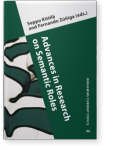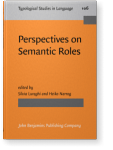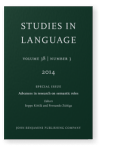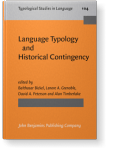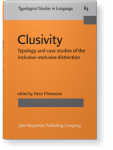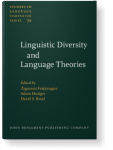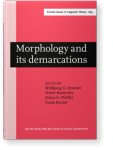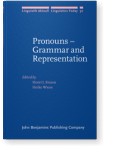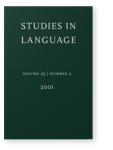Michael Cysouw
List of John Benjamins publications for which Michael Cysouw plays a role.
2016 Identifying semantic role clusters and alignment types via microrole coexpression tendencies Advances in Research on Semantic Roles, Kittilä, Seppo and Fernando Zúñiga (eds.), pp. 27–49 | Article
In this chapter, we illustrate a method for identifying clusters of semantic roles by cross-linguistic comparison. On the basis of data from 25 languages drawn from the ValPaL (Valency Patterns Leipzig) database, we show how one can visualize coexpression tendencies using quantitative methods (in… read more
2014 Inducing semantic roles Perspectives on Semantic Roles, Luraghi, Silvia and Heiko Narrog (eds.), pp. 23–68 | Article
Instead of defining semantic roles on the basis of the interpretation of lexical predicates, I will show that it is possible to induce semantic roles from the usage of case-like markers across a wide variety of languages. The assumptions behind this proposal are, first, that semantic roles are… read more
2014 Identifying semantic role clusters and alignment types via microrole coexpression tendencies Advances in research on semantic roles, Kittilä, Seppo and Fernando Zúñiga (eds.), pp. 463–484 | Article
In this paper, we illustrate a method for identifying clusters of semantic roles by cross-linguistic comparison. On the basis of data from 25 languages drawn from the ValPaL (Valency Patterns Leipzig) database, we show how one can visualize coexpression tendencies using quantitative methods (in… read more
2013 A history of Iroquoian gender marking Language Typology and Historical Contingency: In honor of Johanna Nichols, Bickel, Balthasar, Lenore A. Grenoble, David A. Peterson and Alan Timberlake (eds.), pp. 283–298 | Article
The North Iroquoian languages have a three-way gender division in the third-person prefixes. On the basis of small differences between the meanings of these genders, a history of the gender marking is proposed, building upon earlier work by Chafe (1977). This new proposal uses fewer reconstructed… read more
2013 Some observations on typological features of hunter-gatherer languages Language Typology and Historical Contingency: In honor of Johanna Nichols, Bickel, Balthasar, Lenore A. Grenoble, David A. Peterson and Alan Timberlake (eds.), pp. 383–394 | Article
The introduction of agriculture is a major event in human history, and this article offers a preliminary investigation into whether there might be structural features of language correlating with the distinction between languages spoken by hunter-gatherers and agriculturalists. A number of feature… read more
2005 Syncretisms involving clusivity Clusivity: Typology and case studies of the inclusive–exclusive distinction, Filimonova, Elena (ed.), pp. 73–111 | Chapter
2005 What it means to be rare: The variability of person marking Linguistic Diversity and Language Theories, Frajzyngier, Zygmunt, Adam Hodges and David S. Rood (eds.), pp. 235–258 | Article
2005 Morphology in the Wrong Place: A Survey of Preposed Enclitics Morphology and its demarcations: Selected papers from the 11th Morphology meeting, Vienna, February 2004, Dressler, Wolfgang U., Dieter Kastovsky, Oskar E. Pfeiffer and Franz Rainer (eds.), pp. 17–37 | Article
2005 A typology of honorific uses of clusivity Clusivity: Typology and case studies of the inclusive–exclusive distinction, Filimonova, Elena (ed.), pp. 213–230 | Chapter
2002 ‘We’ rules: The impact of an inclusive/exclusive opposition on the paradigmatic structure of person marking Pronouns – Grammar and Representation, Simon, Horst J. and Heike Wiese (eds.), pp. 41–62 | Article
